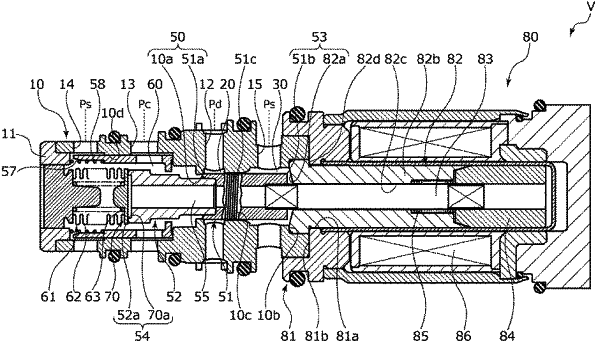| CPC F16K 31/0613 (2013.01) [F16K 11/22 (2013.01); F16K 11/24 (2013.01); F16K 31/1221 (2013.01); F04B 2027/1813 (2013.01); F04B 2027/1827 (2013.01); F04B 2027/1831 (2013.01); F04B 2027/1868 (2013.01); F04B 2027/1881 (2013.01)] | 4 Claims |

|
1. A capacity control valve comprising:
a valve housing provided with a discharge port through which a discharge fluid of discharge pressure passes, a suction port through which a suction fluid of suction pressure passes, and a control port through which a control fluid of control pressure passes;
a rod configured to be driven by a solenoid;
a main valve formed by a main valve seat and a main valve element and configured for opening and closing a communication between the discharge port and the control port in accordance with a movement of the rod; and
a CS valve provided between the control port and the suction port and controlled by a dynamic pressure of a fluid flowing from the discharge port to the control port at an opening state of the main valve, wherein
the CS valve includes a cylindrical CS valve element, and a spring configured to bias the CS valve element in a valve opening direction of the CS valve,
the CS valve element has a receiving surface extending in a radial direction to receive the dynamic pressure,
the CS valve element has a first end surface portion and a second end surface portion on an axially opposite side of the first end surface portion, the first end surface portion is brought into contact with and separated from a CS valve seat formed in the valve housing, and,
when biased in the valve opening direction of the CS valve, the second end surface portion is abutted with an inner surface of the valve housing.
|